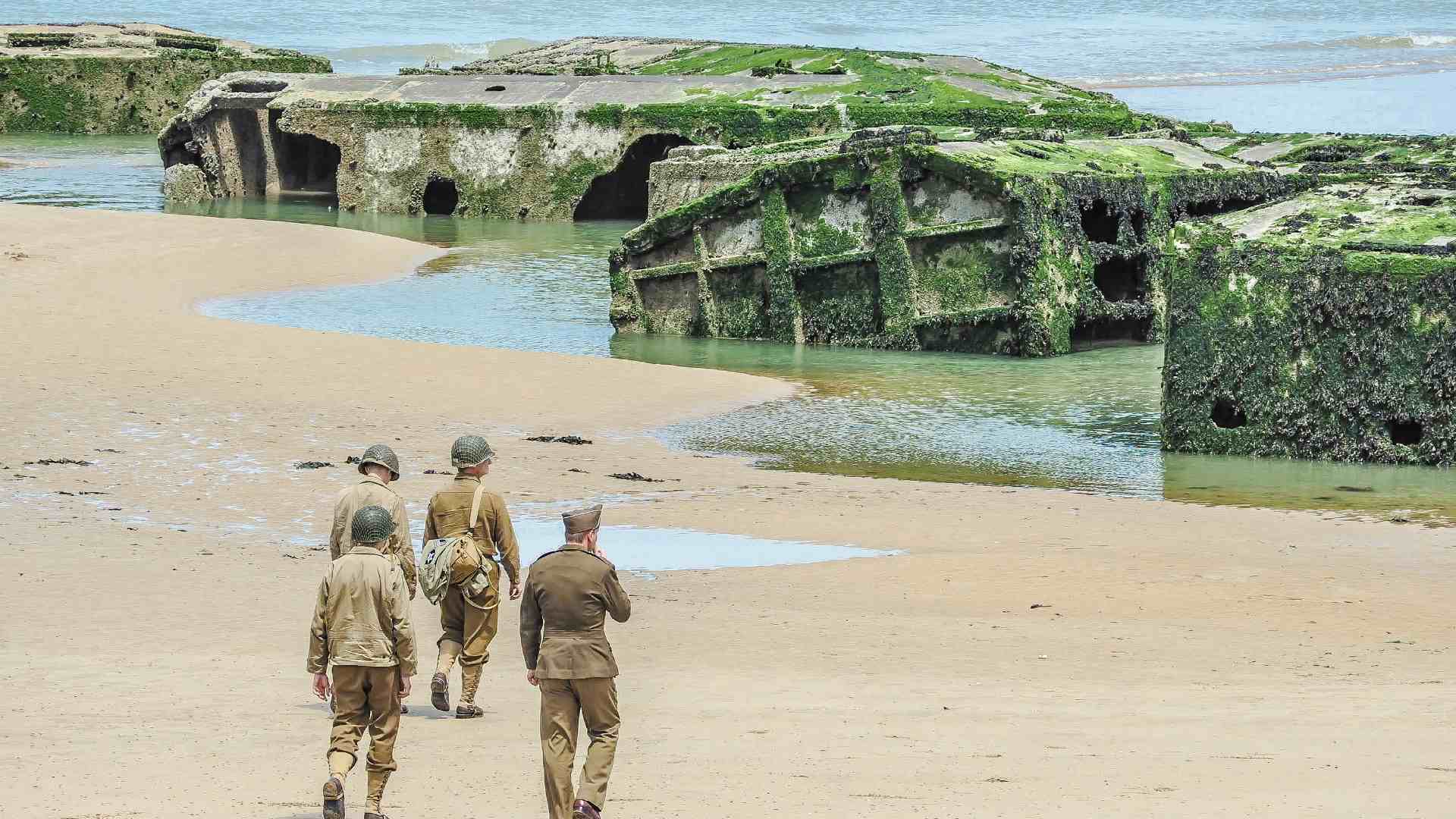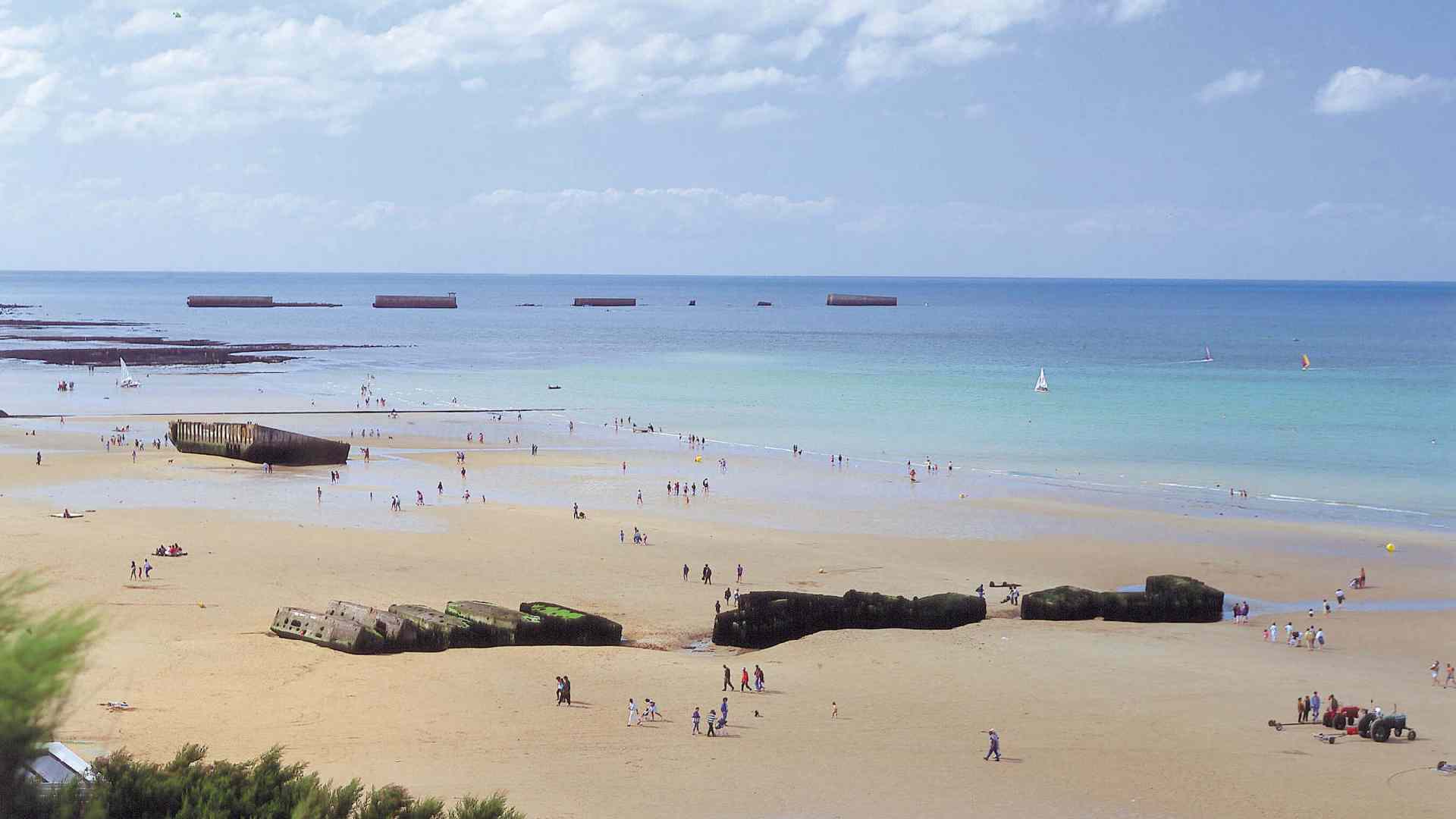
D-Day Beaches – Normandy:
Description: The D-Day Beaches in Normandy, France, are a series of historic landing sites along the coast where the Allied forces, primarily American, British, and Canadian troops, landed on June 6, 1944, during World War II. The D-Day landings were a pivotal event in the war and marked the beginning of the liberation of Western Europe from Nazi occupation. Today, these beaches have become a place of remembrance, paying tribute to the bravery and sacrifice of the soldiers who fought in one of the largest amphibious military operations in history.
Visitor Fee:
There is no specific visitor fee to access the D-Day Beaches themselves, as they are open to the public. However, some nearby museums, memorials, and visitor centers may have entry fees. These fees can vary, and it’s best to check the individual attractions you plan to visit for their respective admission prices.
Transportation:
The D-Day Beaches are located along the coast of Normandy in northern France. The main transportation options to reach the area are:
- Car: Renting a car allows for flexibility and easy access to various landing sites, museums, and memorials.
- Train: Trains connect major cities in France to Caen, Bayeux, and other towns in Normandy, from where you can take local buses or guided tours to the D-Day Beaches.
- Guided Tours: Many tour operators offer day trips from Paris or other nearby cities to the D-Day Beaches, providing transportation and guided visits.
Things to Do:
- Visit the Landing Sites: Explore the historic beaches where the Allied forces landed – Utah Beach, Omaha Beach, Gold Beach, Juno Beach, and Sword Beach.
- Museums and Memorials: Visit museums like the Utah Beach Museum, the Juno Beach Centre, and the Pegasus Bridge Museum, which provide in-depth information about the D-Day operations and the soldiers’ experiences.
- American Cemetery: Pay your respects at the Normandy American Cemetery and Memorial, where thousands of American soldiers who gave their lives during the D-Day landings are buried.
- Arromanches 360 Circular Cinema: Experience a 360-degree film projection at the Arromanches 360 Circular Cinema, providing an immersive historical account of the landings.
- Mulberry Harbours: Explore the remnants of the artificial harbors constructed by the Allies to facilitate the offloading of troops and supplies.

Why People Enjoy Coming Here:
People visit the D-Day Beaches to honor the memory of the soldiers who fought and sacrificed their lives for freedom and democracy. It’s a place of historical significance and remembrance, offering visitors a chance to understand the magnitude of the D-Day operations and the human cost of war. Many find the experience deeply moving and meaningful as they connect with the past and learn about the events that shaped the course of World War II.
Age of This Place:
The D-Day Beaches were the locations of the Allied landings on June 6, 1944, during World War II, making them nearly 80 years old as of 2023.
Additional Nearby Attractions:
- Bayeux Tapestry: Visit the Bayeux Museum to see the famous Bayeux Tapestry, a historical embroidered cloth depicting the events leading up to the Norman Conquest of England.
- Caen Memorial Museum: Learn about the history of the 20th century, including World War II, at this comprehensive museum in Caen.
- Pointe du Hoc: Visit this cliff-top site to see the remains of German fortifications and the US Ranger Monument, commemorating the bravery of the American soldiers who scaled the cliffs on D-Day.
List of Activities:
- Visit the historic landing sites of Utah Beach, Omaha Beach, Gold Beach, Juno Beach, and Sword Beach.
- Explore museums and memorials related to the D-Day operations.
- Pay respects at the Normandy American Cemetery and Memorial.
- Experience the Arromanches 360 Circular Cinema for an immersive historical account.
- Learn about the remnants of the Mulberry Harbours.
- Visit the Bayeux Tapestry and the Caen Memorial Museum.
- Explore Pointe du Hoc and the US Ranger Monument.